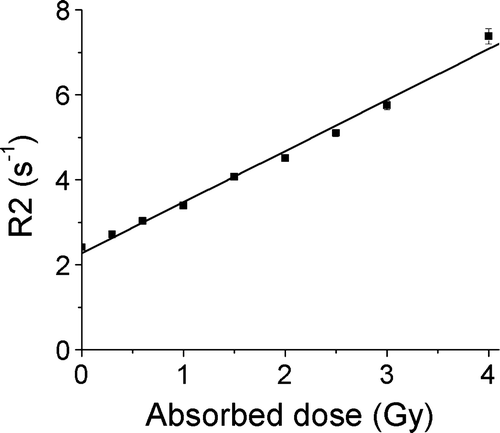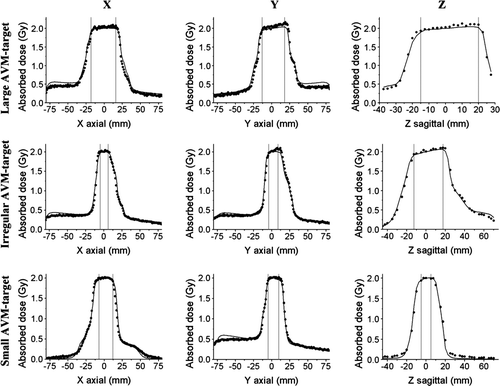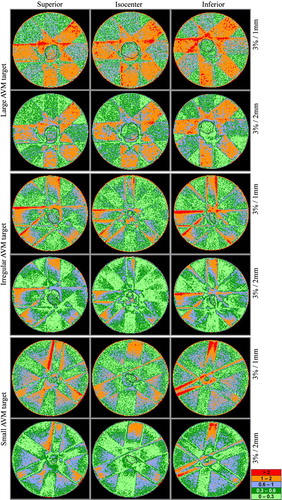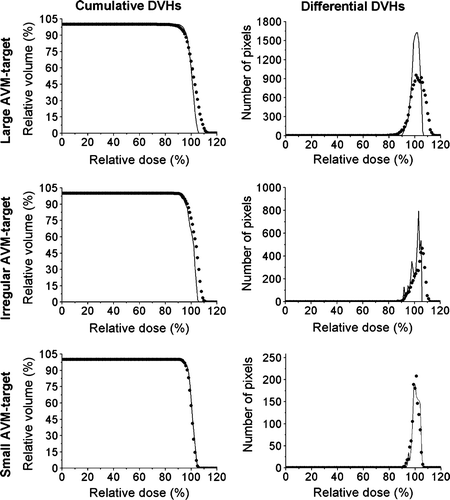Figures & data
Figure 1. AVM volumes from the left: 22.2 cm3 (large), 6.2 cm3 (irregular) and 1.7 cm3 (small). The reference cube has a volume of 1 cm3.

Figure 2. From left: gel filled phantom with the stereotactic frame in the treatment position on the accelerator. Phantom with LIC mounted. 3D reconstruction from the CT study of the phantom with the LIC.

Table I. Gel composition.
Table II. Comparison of calculated and LIC measured dose to isocenter for the three targets.
Figure 3. Dose response evaluated by means of R2 as a function of absorbed dose for the batch of gel that was used for the large target. The uncertainty bars correspond to 1 SD in the R2 map. Note that for most data points the uncertainty bars are smaller than the symbols and therefore not visible.

Figure 4. Dose profiles through the isocenter for the three investigated AVMs (—TMS-calculated, • measured). The X-axis shows the lateral, Y the anterior-posterior and Z the cranial-caudal direction. The gray vertical lines in each plot mark the extension of the planning target volume (PTV). Zero is the isocenter position on each plot.

Figure 5. γ-index in the three AVMs. From left to right: 1.5 cm superior to the isocenter, through the isocenter and 1.5 cm inferior to the isocenter. For the small AVM 1.0 cm superior and 1.0 cm inferior, respectively. The upper and lower plot for each AVM allows dose difference of 3%, distance to agreement 1 mm for the upper plot and 2 mm for the lower plot. Target outline in black.

